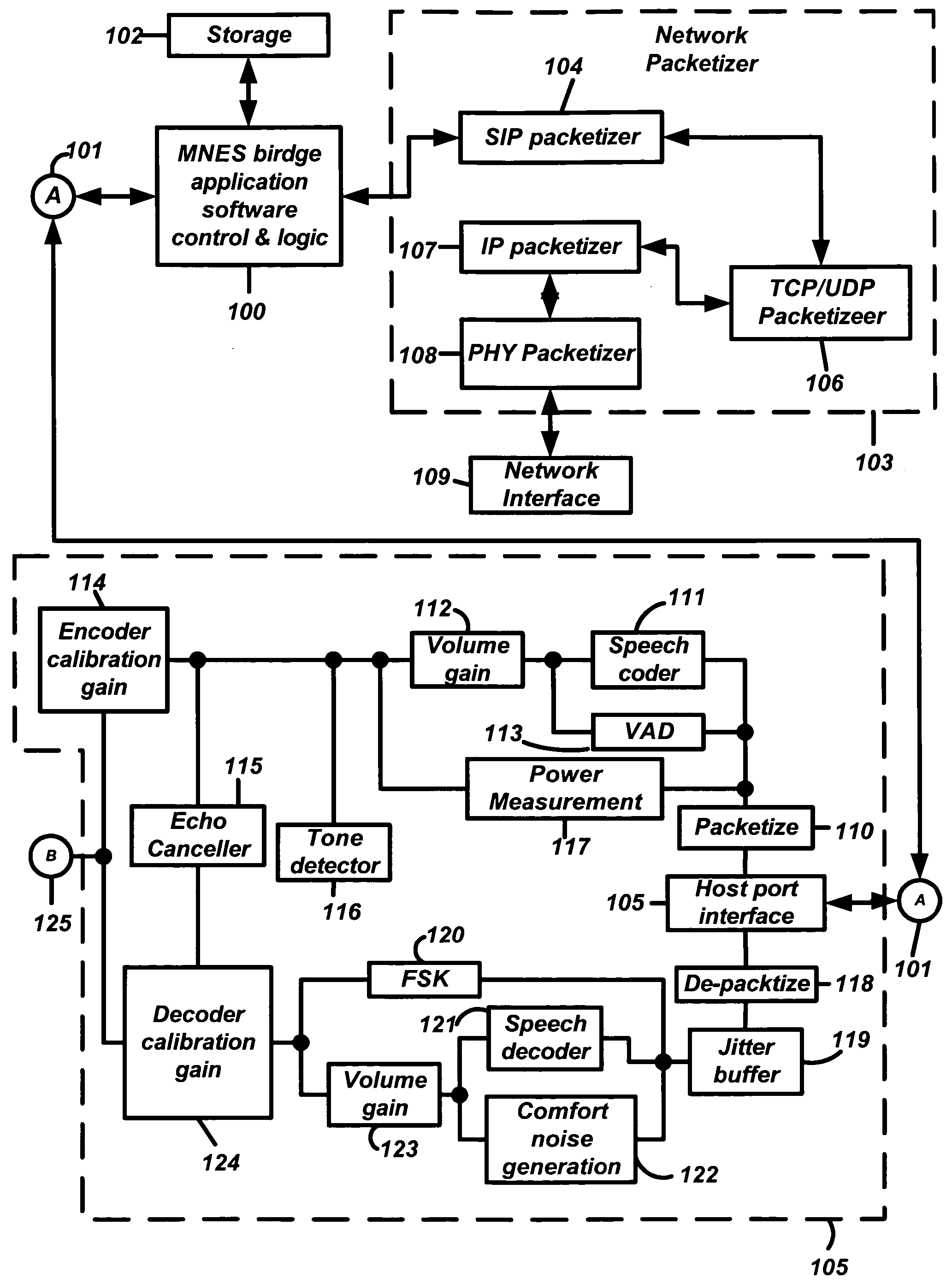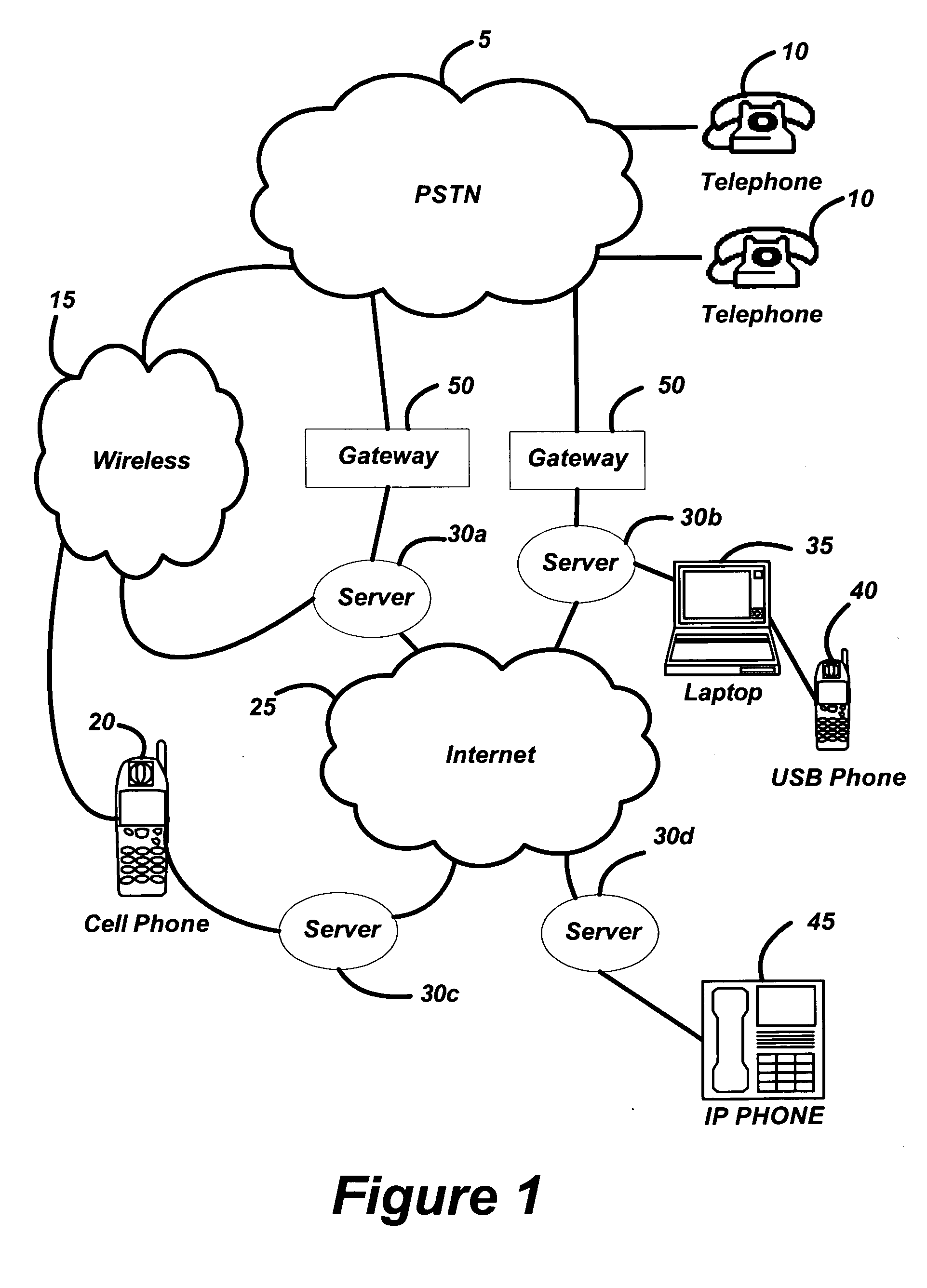Multi-network exchange system for telephony applications
a multi-network exchange and application technology, applied in the field of communication systems and methods, can solve the problems of inability to receive calls, inability to offer the kind of features that are available, and ineffective pstn system,
- Summary
- Abstract
- Description
- Claims
- Application Information
AI Technical Summary
Benefits of technology
Problems solved by technology
Method used
Image
Examples
Embodiment Construction
[0082] Refer now to FIG. 2 for a detailed description of the operation of the Multi-Network Exchange System (MNES) of this invention. The Multi-Network Exchange System includes one or more MNES bridges 55 and 97 that allow information in the form of voice or fax telephone calls to be exchanged between a PSTN network 90 and a digital communications network 85 such as the internet. The MNES bridge 55 has a telephone interface to the PSTN network 90 and a digital network interface for communications the internet 85. At least one telephone set 60 is connected to the MNES bridge 55 and at least one computer system 65 is similarly connected to the MNES bridge 55. Optionally, a facsimile machine (fax) 62 and an answering machine 63 may be connected to the MNES bridge 55 (while not shown the fax machine 62 and answering machine 63 may be connected to the other MNES Bridge 97) During normal operation, the PSTN network 90 communicates telephone calls directly to the telephone set 60 and the i...
PUM
 Login to View More
Login to View More Abstract
Description
Claims
Application Information
 Login to View More
Login to View More - R&D
- Intellectual Property
- Life Sciences
- Materials
- Tech Scout
- Unparalleled Data Quality
- Higher Quality Content
- 60% Fewer Hallucinations
Browse by: Latest US Patents, China's latest patents, Technical Efficacy Thesaurus, Application Domain, Technology Topic, Popular Technical Reports.
© 2025 PatSnap. All rights reserved.Legal|Privacy policy|Modern Slavery Act Transparency Statement|Sitemap|About US| Contact US: help@patsnap.com



